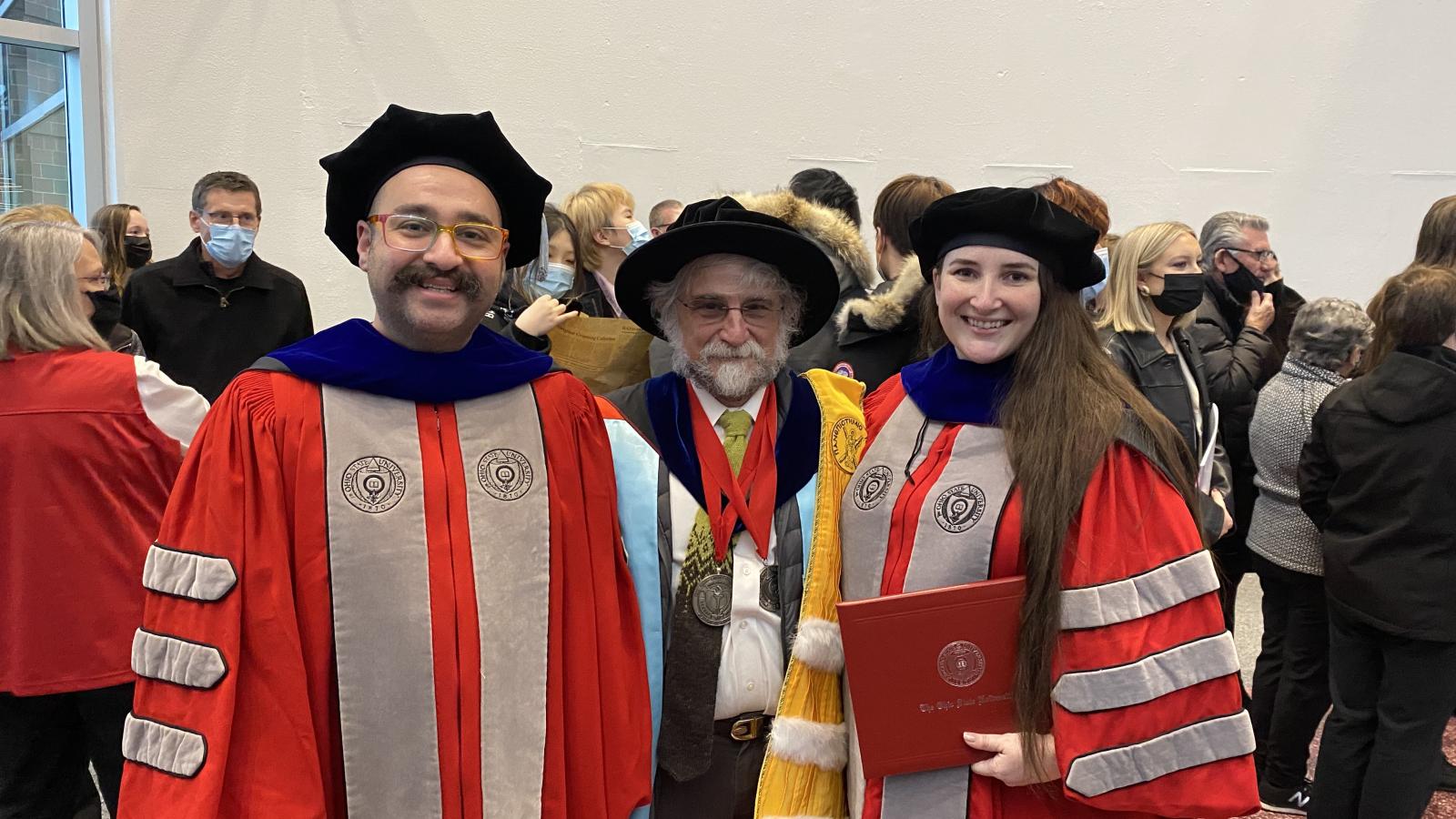
The Ohio State University's Department of Linguistics is proud to announce that the count of doctoral alumni of our PhD program has now surpassed 200. Let us take a moment to consider how things have evolved since the department's foundation in 1965.
The year in which the most students received their PhD was 2012, with nine students. The speed at which the department produced PhDs notably increased after 1995: while twelve different years after 1995 saw six or more students graduate, this was the case for only one year (1991) beforehand. Furthermore, the last year without any graduates of the PhD program was 1987.
Over the decades, both the program and the composition of people in it have changed consistently. As can be seen with a look at the list of past dissertations, in the program's early days, syntacticians (often also semanticists) were numerically dominant. In fact, of the first ten dissertations, eight were in syntax (with one of these also heavily focusing on pragmatics); the other two were in phonetics and phonology. In fact, since 1965, alumni have graduated from the department with dissertations in syntax at a rate of about one per year largely consistently. However, in the meantime, other subfields grew within the department. By 1983, dissertations outside of syntax and semantics reached 50% of all dissertations since the foundation of the department. Of dissertations finished between 2000 and 2021, the 21 syntax/semantics dissertations sit alongside 40 in phonetics or phonology, 32 in sociolinguistics and/or historical linguistics, 27 in computational linguistics, and seven in psycholinguistics. The rate of dissertations in morphology, although once relatively sparse, also saw a burst of dissertations in the years 1999-2006, and is now seeing a period of renewed growth.
A similar pattern of both retention of early strengths alongside diversification can be seen in terms of languages being looked at. In the early days of the program, in addition to broad theoretical and cross-linguistic studies and those focusing on English, a particular strength in Chinese linguistics is discernible: indeed, the first two PhD dissertations of the program were on Chinese, and there would be 16 more, making dissertations in Chinese linguistics nearly 10% of all dissertations produced, with the last one in 2020. However, these robust strengths in broad, Chinese, and English linguistics would be joined by a diverse array of languages. The collection of dissertations in Chinese linguistics now sits alongside twelve dissertations on Korean, from 1991 to 2012, and six on Japanese from 1998 to 2015. The department has also seen many dissertations examining languages of Africa both large and small, including Bulu, Juǀʼhoan, Shimakonde, Bukusu, Wolof, Kikamba, Runyankore, Gude, Kikamba, Ibibio and Kikuyu. Native American languages analyzed have included Navajo and two Mayan languages, Mam and K'iche. Other clusters of dissertations can be seen in contact and creole languages such as Jamaican Creole and Chavacano, as well as Indo-Iranian languages, German, Arabic, and Greek and neighboring Balkan languages.
Certain professors stand out as the Doktorvater or Doktormutter of many alumni, such as Brian Joseph with 28 alumni, Mary Beckman with 24, and Arnold Zwicky with 22. However, all professors in the program would ultimately contribute to the academic environment in which our alumni, now over 200 in number, would develop as scholars. Alumni of the Ohio State University's Department of Linguistics would go on to be well represented in both industry and academia. Of those who would go on to become professors, a non-exhaustive list of destinations includes Stanford University, Massachusetts Institute of Technology, National Taiwan University, University of Hawaii, University of Massachusetts, Universität Tübingen, University of Illinois, UCLA, University of California -- Berkeley, Seoul National University, Tel Aviv University, Rutgers University, University of Washington, Tokyo University of Foreign Studies, and the Ohio State University itself.
One of the most major changes to the program was in the early 1990s, when it was decided that students would be let directly into the PhD program rather than going through the Masters program first. Instead of taking exams, after this point, students had to write research papers, or "qualifying papers", which became known as "QPs". A decade later, the current system with two, rather than one, qualifying papers, was put into place. Nevertheless, the department has continually evolved with the times, as can be seen with the emergence and rapid growth of computational linguistic work within the community. One can only wonder what the department community will look like when we reach 300 alumni.
